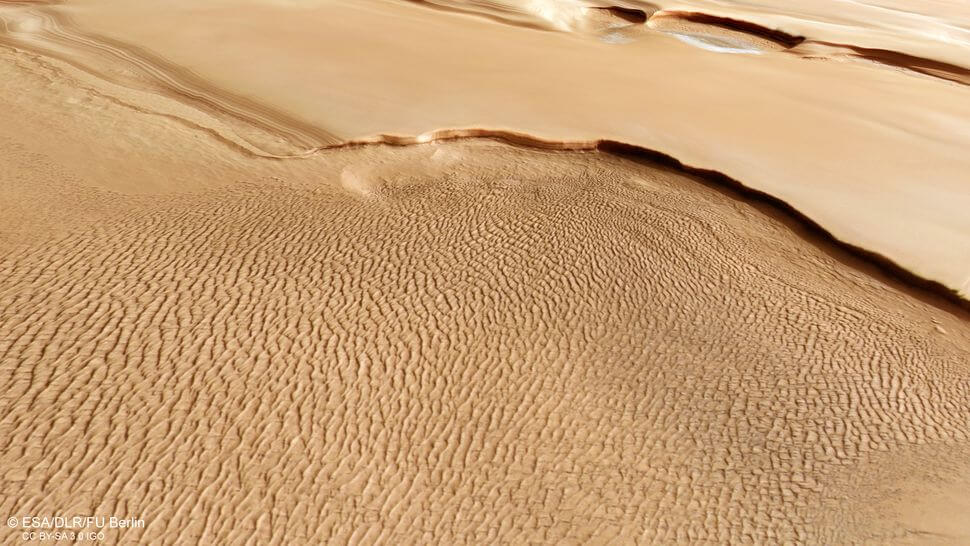
How long would it take to walk around Mars? (Image Credit: Space.com)
Humans have long had a fascination with Mars, and NASA has ambitious plans to send astronauts there within the next few decades. Anyone walking on Mars would likely explore only a small fraction of the planet’s surface.
But without oceans or other bodies of water, could an astronaut walk all the way around the Red Planet? How long would it take to walk around Mars?
Unsurprisingly, a long time — though exactly how long might be hard to say. If the astronaut could travel continuously at a walking speed, it would be a simple calculation.
Related: Boiling blood and radiation: 5 ways Mars can kill
“We would need essentially two parameters,” said Erdal Yigit, an associate professor of physics and astronomy at George Mason University who studies the atmospheres of planets. Those parameters are the astronaut’s velocity (speed and direction) and the distance they would travel.
If the person traveled along Mars’ equator, they would walk about 13,300 miles (21,400 kilometers) to get all the way around the planet. Walking around Mars through its poles would shave off about 100 miles (160 km), but the extreme cold would pose an even greater challenge than the harsh conditions on the rest of the planet, Yigit said.
The person’s velocity would be about 3.1 mph (5 km/h), which is also an average walking speed on Earth, straight along the equator, Yigit said. Despite Mars’ reduced gravity (about 40% of Earth’s), Yigit doubts a person’s walking speed would be much different on Mars. Like any back-country hiker on Earth, this person would likely be carrying a heavy load of supplies — such as oxygen, water and food — and would be wearing a heavy spacesuit.
If someone were to walk continuously around Mars at that speed, the calculation would be simple: Just divide the distance by the velocity. That would mean it would take about 4,290 hours. There are about 24.7 hours in a Martian day (called a sol), so it would take roughly 174 sols to walk around Mars continuously. That’s a little over a quarter of a Martian year, which is 668.6 sols.

Of course, no one would be able to complete that walk continuously — on Mars, Earth or anywhere. Even if the person were able to bring enough oxygen, water and food with them, and could eat and drink while walking, they would still need to stop to sleep. Assuming the astronaut slept about eight hours each night, it would add about 56 sols. If the person stopped for four or five more hours each sol to eat, rest, change clothes, clean themselves, and set up and deconstruct some type of campsite, it would take another 30 or 35 sols, depending on how long they were stopped.
All in all, a more realistic estimate might be at least 265 sols, about 40% of the Martian year. But that calculation does not account for potential obstacles, such as rough terrain. Mars has many mountains, including some that are taller than any on Earth, as well as valleys, craters and many other geological features that would be tough to navigate.
Of course, it is very unlikely that anyone will be walking all the way around Mars anytime soon. People have circumnavigated Earth on foot, though it is, of course, impossible to truly walk or run all the way around, due to the oceans. But humans have walked on only a small portion of the moon, despite traveling there multiple times. And walking so far and for so long on Mars would pose many logistical problems, like bringing enough food, water and oxygen and protecting the person from the dangerous impacts of radiation.
Although it’s highly unlikely that humans will walk around the entire Red Planet, sending astronauts to the surface still has many advantages over rovers, Yigit said.
Rovers “are susceptible to dust and other kinds of electrical problems; something may happen,” he said. With humans “even if there are problems, we can find solutions around them.”





